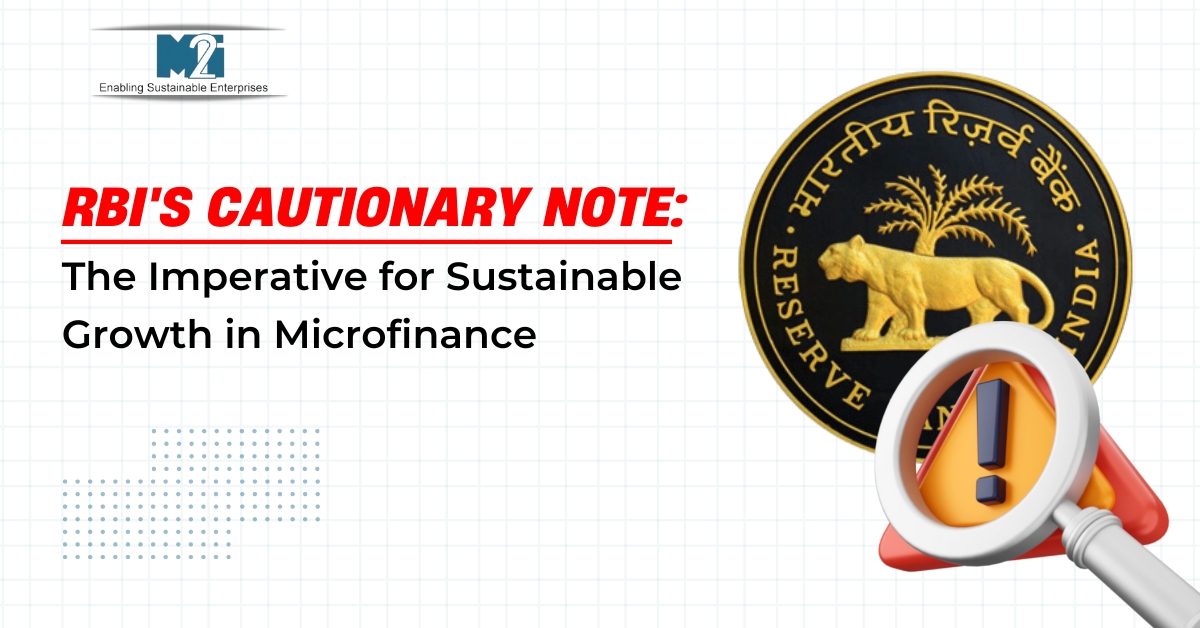
RBI's Cautionary Note: The Imperative for Sustainable Growth in Microfinance
In July 2024, the Reserve Bank of India (RBI) issued a cautionary note advising microfinance lenders to slow down on loan disbursements in Bihar and Uttar Pradesh. This advisory comes in response to signs of market overheating, a situation that raises significant concerns about the sustainability of microfinance operations in these states. As these regions account for a substantial share of microfinance loans, the RBI's guidance underscores the urgent need for microfinance institutions (MFIs) to adopt sustainable growth strategies.
Understanding the Context
Bihar and Uttar Pradesh are pivotal markets for microfinance, accounting for 25.3% of total microfinance loans. These loans primarily serve low-income women borrowers, who rely on them for various socio-economic needs. The RBI's cautionary note is a reaction to the rapid growth and high penetration of microfinance services in these states, which have shown signs of market overheating, particularly in the March 2024 quarter.
According to a CRIF Highmark report, the number of borrowers with loans from three lenders in Bihar stood at 10.1%, and those with loans from four or more lenders at 8.7%. In Uttar Pradesh, these figures were 7.7% and 6.6%, respectively. These numbers highlight a significant increase from previous years, indicating potential over-indebtedness and market saturation.
The Need for Sustainable Growth Strategies
For MFIs, the RBI's cautionary note is a critical reminder to prioritize sustainable growth. Here are key reasons why sustainable growth strategies are essential:
-
Risk Management:
-
Rapid, unchecked growth can lead to market saturation, increasing the risk of defaults and financial instability.
-
Sustainable growth involves careful assessment and mitigation of risks, ensuring that lending practices do not compromise the financial health of borrowers or the stability of the institution.
-
-
Customer Protection:
-
Over-indebtedness among borrowers can lead to severe financial distress, undermining the core mission of MFIs to promote financial inclusion and uplift low-income communities.
-
Responsible lending practices, transparent pricing, and effective communication with borrowers are crucial to protect customers from exploitative practices.
-
-
Long-term Viability:
-
Sustainable growth ensures that MFIs can continue to serve their target communities over the long term without facing regulatory backlash or reputational damage.
-
By focusing on quality over quantity, MFIs can build a loyal customer base, enhance their credibility, and attract more investment.
-
-
Regulatory Compliance:
-
Adhering to regulatory guidelines and implementing robust risk management frameworks helps MFIs stay compliant with central bank directives.
-
This compliance reduces the likelihood of punitive measures and fosters a stable operating environment.
-
Strategies for Sustainable Growth
To achieve sustainable growth, MFIs should consider the following strategies:
-
Diversified Portfolio:
-
Diversify the loan portfolio to spread risk and avoid over-reliance on a single market segment.
-
Explore opportunities in underserved regions and sectors to balance the growth.
-
-
Enhanced Credit Assessment:
-
Implement rigorous credit assessment procedures to evaluate borrowers' repayment capacity accurately.
-
Utilize technology and data analytics to improve the precision of credit scoring models.
-
-
Financial Literacy Programs:
-
Invest in financial literacy initiatives to educate borrowers about responsible borrowing and financial management.
-
Empower borrowers with the knowledge to make informed financial decisions, reducing the risk of over-indebtedness.
-
-
Regular Monitoring and Audits:
-
Conduct regular monitoring and audits of loan portfolios to identify and address potential risks early.
-
Maintain transparency in lending practices and ensure compliance with all regulatory requirements.
-
-
Collaboration with Stakeholders:
-
Collaborate with industry associations, regulators, and other stakeholders to align on best practices and address common challenges.
-
Participate in forums and discussions to stay updated on industry trends and regulatory changes.
-
Conclusion